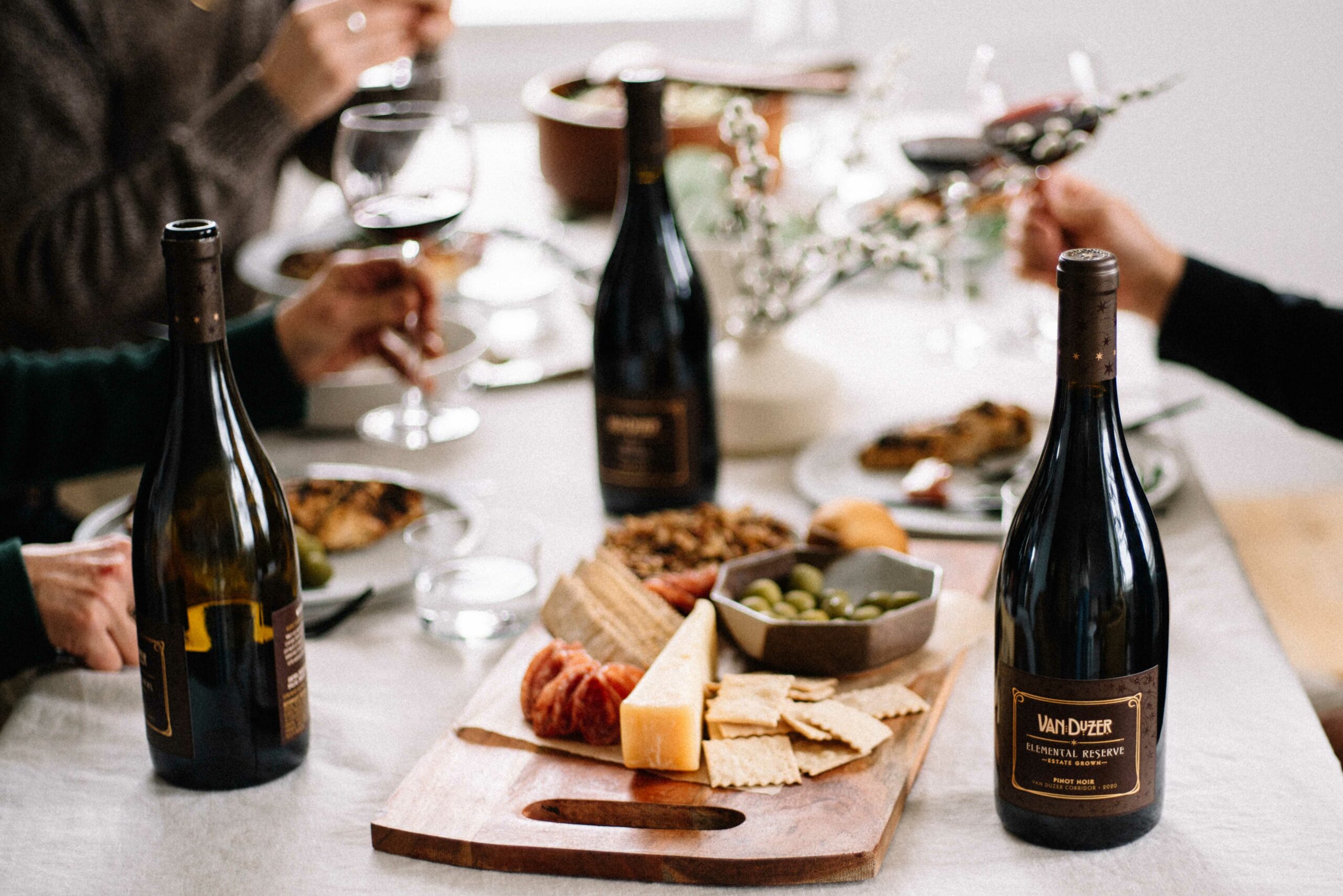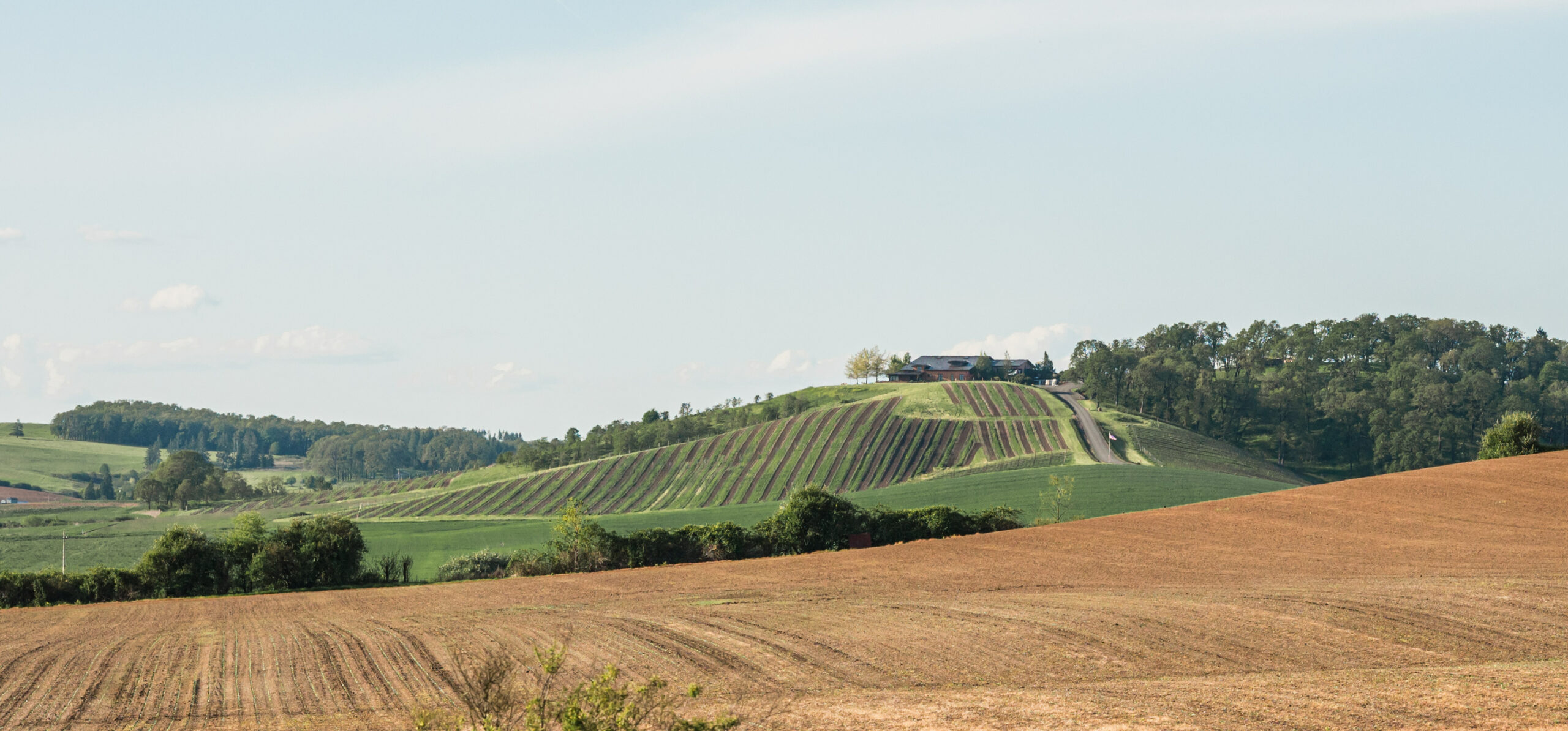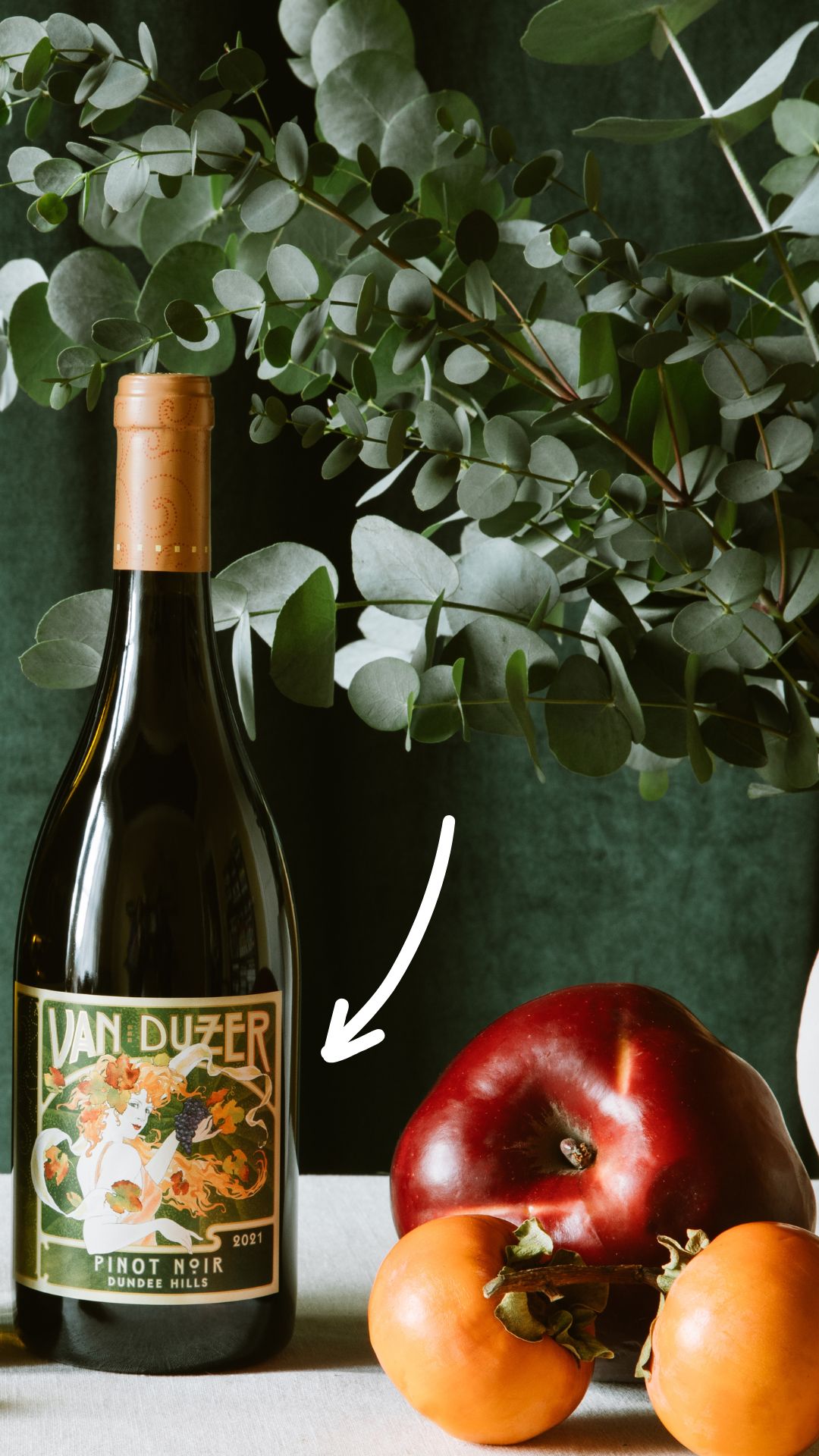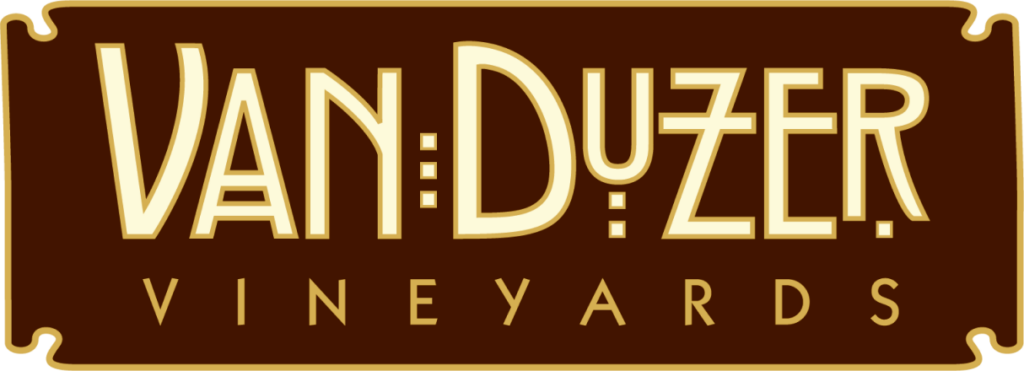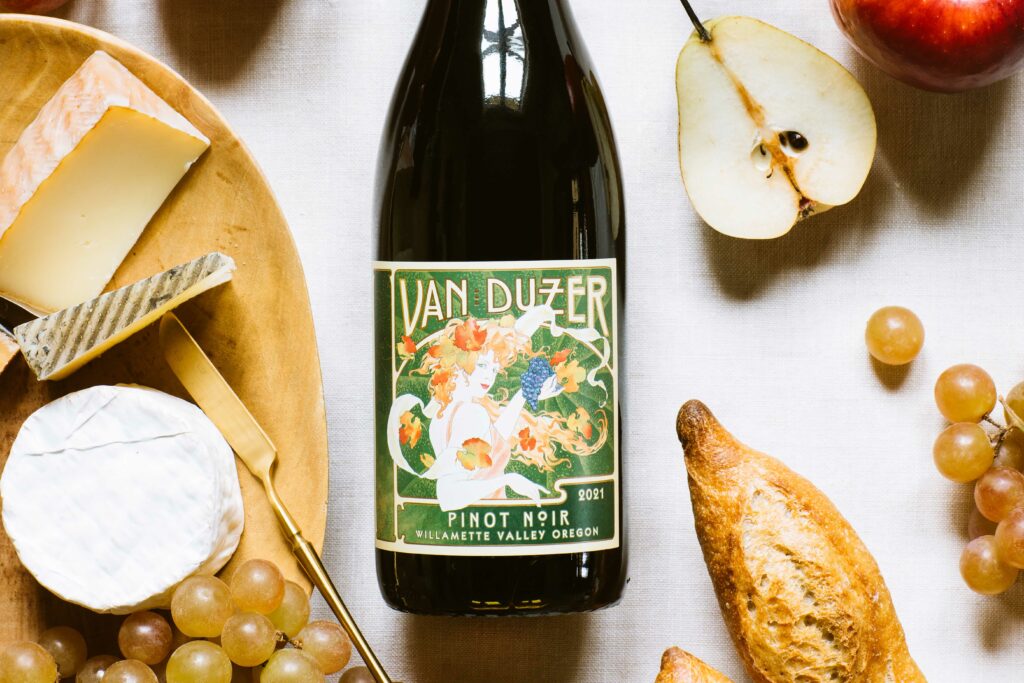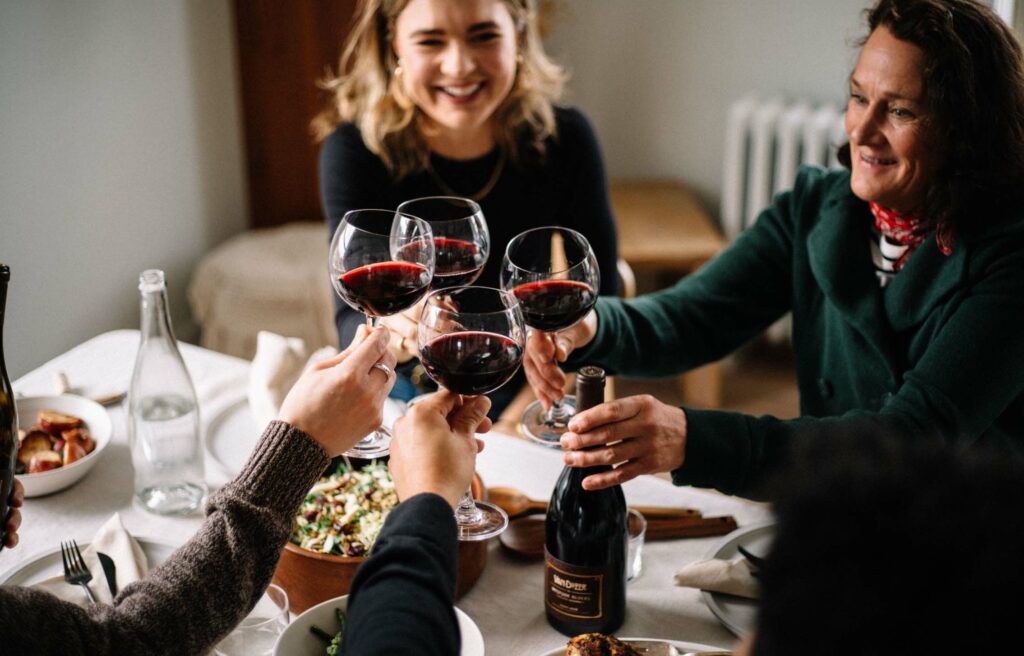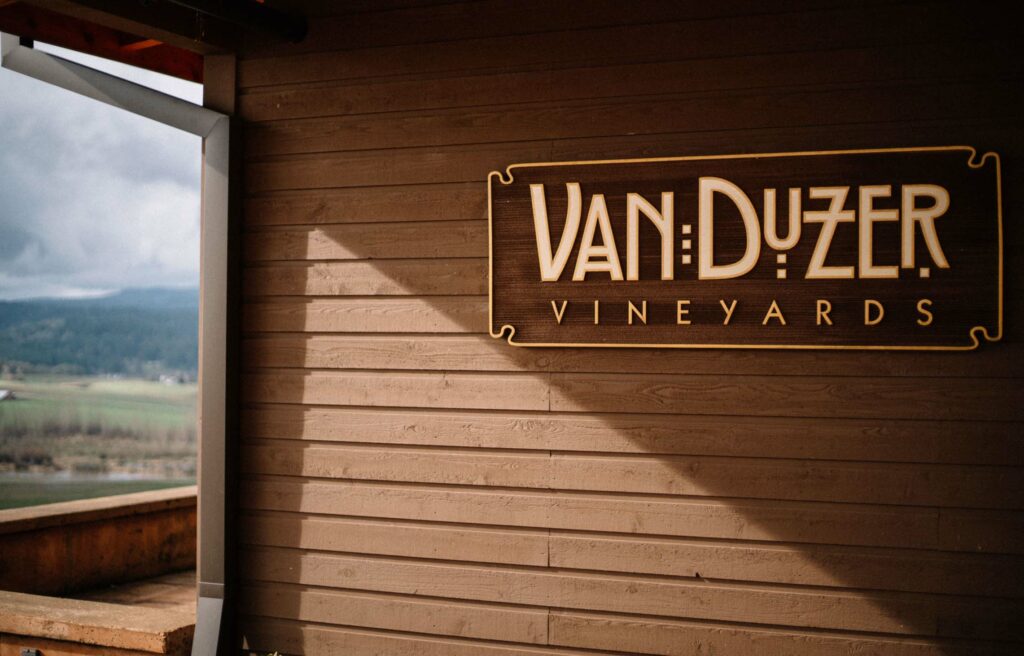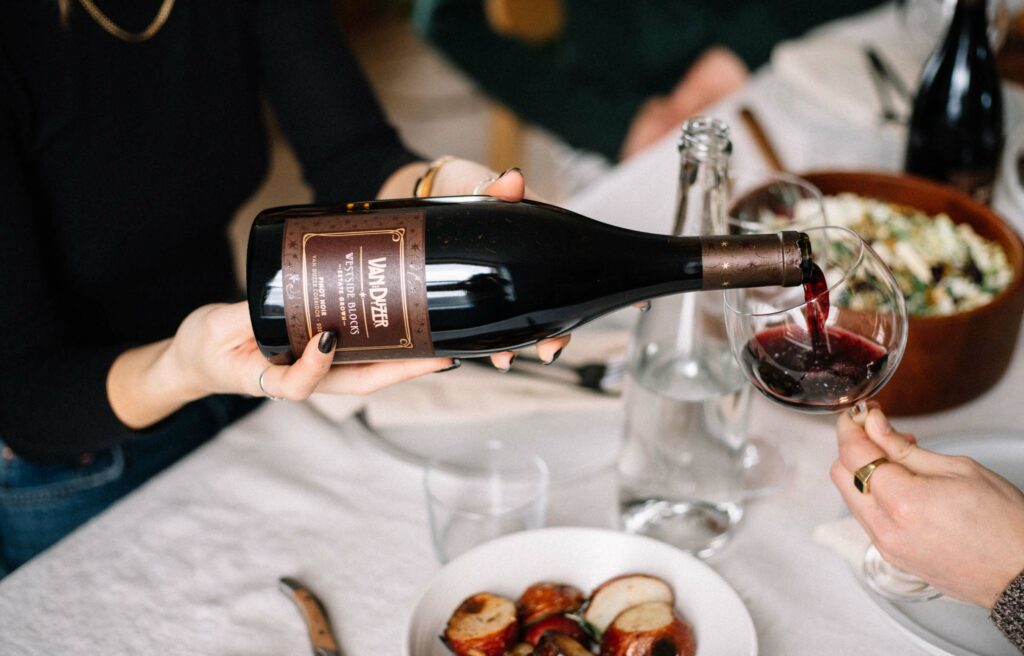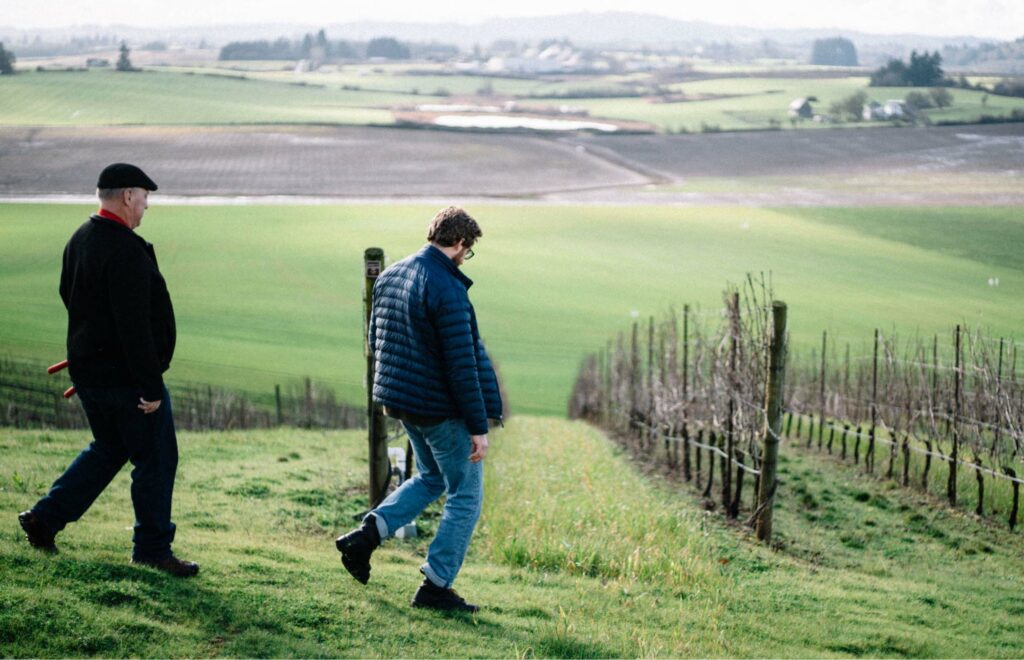We’re flipping the script on the old-school rules about what goes with what — and, instead, we want to teach you the new rules (well, guidelines) about how to pair food and wine to make it a lot more fun.
Rule #1 Pair like with like
The most basic of food & wine principles is to pair food and wine of similar weight and texture.
Do you have a rich Syrah? Pair it with an equally rich lamb stew. Sipping on a light glass of Pinot Blanc? Try it with a goat cheese salad. Some of the classic pairings; like a grilled steak with a rich red wine or fish with white wine fall in this category.
A great way to break down these pairings is to think of the basic elements that make up the dish and the wine. For example, let’s say you want to pair wine with dessert. If that dessert is a passionfruit crème brûlée, you would think of the main elements of the dessert and try to match those. In this case, a passionfruit crème brûlée’s elements are sweet, creamy and acidic. When looking for a wine to pair with this, choose a wine that shares those components. When pairing wine with dessert, always match the level of sugar in the dessert to the level of sugar in the wine. Then try to find a wine that also has bright acidic and rich creamy elements to it. A great fit would be a late-harvest Riesling or a Sauternes.
Along those same lines, pairing ‘like with like’ can also be all about the vibe. For example, the next time you grill out and are going for a casual vibe, try finding an easy-going and casual wine like our Rosé of Pinot Noir that would go well with everything from burgers to grilled salmon to potato salad and baked beans. It’s all about creating a vibe with the food, the wine and the company.
Rule #2 Opposites attract
While the classic pairings can be fun…opposites definitely attract. Think about what makes a Reese’s peanut butter cup so great. It’s that classic combo of salty and sweet of course! These are some of our favorite pairings; the fun out-of-the-box pairings that will blow your old ideas of pairing out of the water.
One of the best ways to play with ‘opposites attract’ is also one of the easiest. Order takeout! Find your favorite Thai or Vietnamese restaurant and don’t be afraid to order something with a bit of heat to it. Then open a bottle of a Riesling that’s on the sweeter side — a sweeter German Kabinett or Spätlese is a good place to start. The spicier the dish, the sweeter the wine should be. This is where the real magic happens. Take a bit of food, then take a sip of wine. Notice how the wine takes the spiciness of the dish down a notch and the spice takes the sweetness of the wine down a notch. Both become more mellow and infinitely more delicious. By pairing opposites, you get something that’s greater than the sum of its parts.
Another fun way to experiment with ‘opposites attract’ is to play with ‘high-low pairings. While we think of high-end wines as something that belong in (stuffy) high-end settings, there’s something magical that happens when we take them down a notch.
Think high-end French Champagne with fried chicken. Or that ‘special occasion’ bottle of Homestead Pinot Noir that you have been keeping in your cellar with burgers and fries on a Tuesday night. By breaking out the ‘special’ wines on the casual everyday occasions, we elevate the experience and create unforgettable memories and moments.
Rule #3: What grows together goes together
Using Oregon as our starting point we’ll explain why things that grow in the same region often go together well. This rule can be so much fun to explore. Pick a region that you love and have visited or are dreaming of visiting and plan a dinner party (or fun night in) around it.
Dreaming of visiting us here in Oregon? Pair toasted hazelnuts with a bottle of our Estate Chardonnay as an appetizer. Or throw a salmon bake in your backyard paired with bottles of our iconic Dijon Blocks Pinot Noir.
This is also a great rule to keep in mind while traveling. Experiment with what the locals are eating and drinking together. There’s a reason why truffles go so well with Barolo in the Piedmont region of Italy or why Sancerre and chevre are a match made in heaven.
Rule #4: The importance of being acidic
Is there a better pairing than sparkling wine and potato chips? We think not! This pairing works so well because the acidity levels in the sparkling wine cut through the richness of the chips for a match made in heaven. Think of squeezing a lemon on a piece of fried fish. It immediately lightens it and makes that bite more enjoyable. Acid in wine works in a similar way. In fact, we think that acid is the secret ingredient in food and wine pairing — and we’ll show you how to use it to make wonderful food and wine pairings.
Rule #5: Versatility is everything
Picking the ‘right’ wine to pair with a specific dish can be more than a little intimidating. We also know that the way most of us eat these days is not by pairing one wine with one particular food. More often, we share small plates with friends, order a variety of different foods for takeout or bring wines for friends when we don’t know what they’re serving.
That’s why we’ve made it easy for you by picking the 3 wines that go with just about anything; Riesling, Rosé & Pinot Noir. These are the Swiss Army knives of the world of wine. What makes them versatile is the combination of bright acidity and vibrant fruit which makes them wines you can count on to ‘go’ in any situation.
Bonus Rule: Just drink what you like
Last, but certainly not least, just drink what you like! There is no right or wrong when it comes to food and wine pairing; there’s only what you enjoy. These rules are meant to get you started on experimenting with how wine and food can complement each other. Have fun. Experiment. And don’t be afraid to break the rules! They’re just guidelines after all.

